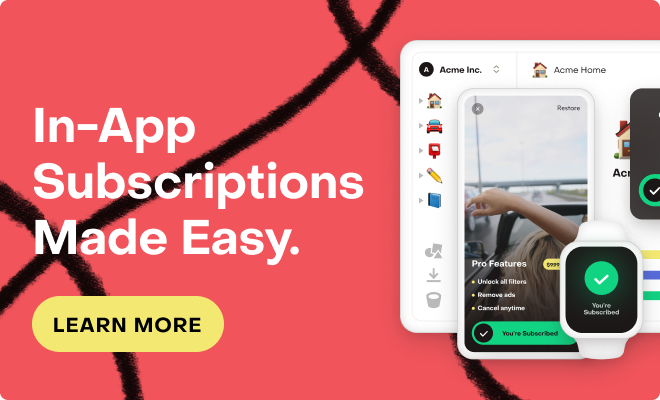Hello! I’m really destroyed and don’t understand how to solve my problems.
I have one apple account and can create multiple user-accounts in my app. First case:
- User A login (with logIn())
- Buy purchase
- User A logout (with logOut())
- User B login (with logIn() another appUserId)
Now User B have subscription from User A. But i want the User B to not have a subscription in this case. What can i do?
And more one, in this case after login method getPurchaserInfo() return not active subscription (I’ve been awaiting more than 5 minutes (time for reset cache but got not active). After this i show payment card and by tap (call method purchaseProduct()) user B see system alert with “have already subscription”. And after this method getPurchaserInfo() for User B return active status of subscription.
What can i do in this case?
Thanks for support!




